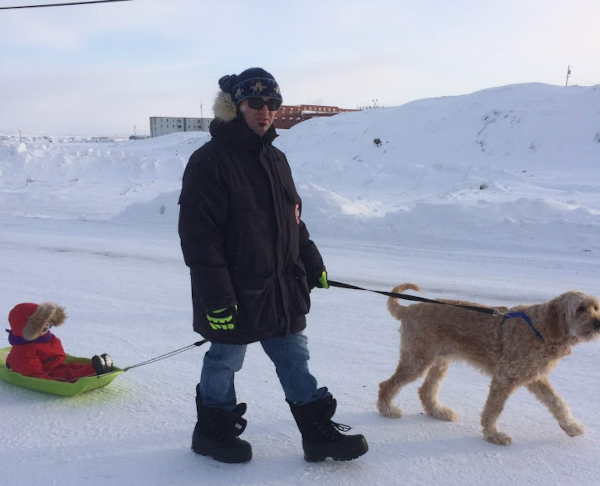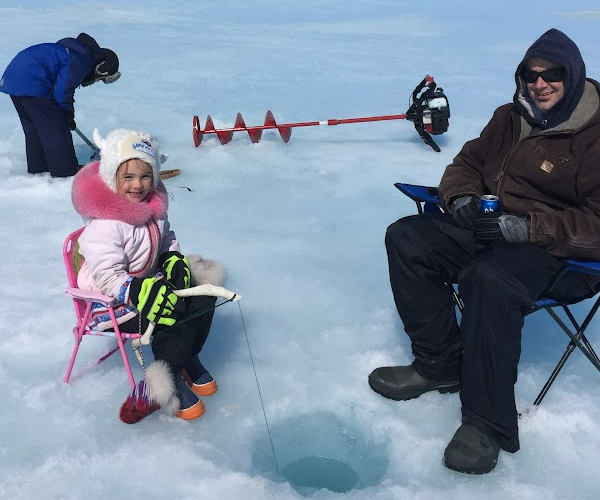This is part two of our two-part article on Matt Stacey’s Biomed career journey. In part one, we explored Matt’s beginnings as a biomedical technologist, growing up in Newfoundland and making the journey north as a biomedical technologist in Nunavut, where he met his wife, Jacqueline, their move to New Brunswick, and having their first child. We learned that Matt and Jacqueline decided they wanted to challenge themselves again, introduce their children to the Nunavut experiences and settle back into the northern living lifestyle they had become so accustomed to early in their careers. In part two, we’ll discuss Matt’s transition to management/administrative roles, his work on some major territorial projects that continue to have long lasting, positive impacts on Nunavut’s healthcare system, and finally, Matt’s current role and valuable life lessons he has learned from his experiences over his career.
Part 2:
In the spring of 2012, Matt became aware of a position with the Government of Nunavut (GN) based in Rankin Inlet. The job title was intriguing, manager of medical technology systems, and he decided to check into it. The job required a diploma in laboratory medicine, diagnostic imaging, or biomedical engineering and involved the management of those three services at the Kivalliq Health Centre in Rankin Inlet, Nunavut. Wanting to broaden his skills set and take on a new challenge, Matt applied for the job and ended up getting it. He and his family were off for their next northern adventure! Describing his experience in this unique role, Matt said:
"That job was another sort of blessing in disguise. It gave me the management experience I felt I needed to further my career, broaden my skill set and gain some perspective on how lab and diagnostic imaging services are planned and delivered. Even with these services being comparably smaller operations to those found in larger hospitals, I still had to rapidly learn the intricacies of managing DI and lab professionals while not actually being a lab or imaging professional. It was a huge learning curve for me. Diving into this new role, I quickly learned to accept and be honest with myself and others about what I didn't know, to lean on the professionals around me and to leverage my experience to lead the team.”
Aside from the challenges of becoming a new manager to multiple professional disciplines other than his own, Matt also became well acquainted with the significant challenges of providing basic diagnostic x-ray services in many of Nunavut’s most remote community health centres. This led him to what he describes as one of his “legacy projects”, the Basic Radiological Technician (BRT) training program.
In Nunavut, each community health centre is equipped with a portable x-ray machine, image processing equipment and EMR/PACS access. Historically, x-ray procedures were mainly performed by nursing staff that underwent limited informal x-ray training and some Inuit support staff that had received training called the basic radiography worker (BRW) program about 15 years prior. That program was delivered only once, and although it had some successes, it ended within a few years of startup.
Matt often found himself on the receiving end of complaints about x-ray quality, calls for appropriate training and clinicians advocating on behalf of their patients for better x-ray services. He knew what needed to be done and set out to advocate for funding to implement a high-quality, focused, basic x-ray training program, designed and intended exclusively for Nunavut Inuit health centre employees. By focusing the training on Inuit health centre employees rather than nurses, who are a very transient workforce in Nunavut, trained BRTs improve x-ray service quality and consistency, enhance the patient experience by providing culturally appropriate care and enable the healthcare system to keep patients closer to their home to receive basic, yet critical, healthcare services.
Matt was successful in obtaining the funding to develop and implement the program and was fortunate to find an excellent partner in the Ontario Association of Medical Radiation Sciences, who were contracted to develop and deliver the new iteration of the program that was called the basic radiological technician (BRT) program.
The program has been running for about six years and has produced over 30 BRT graduates to date. Matt’s most recent success related to the program was the approval of a business case he authored that created eleven new basic radiological technician / laboratory clerk positions at health centres across the territory. The new positions create career laddering opportunities for existing Inuit employees, which also creates vacancies in entry-level government positions for other Inuit to fill. The combined success of the BRT program and the creation of full-time, permanent positions dedicated to providing x-ray/lab services in Nunavut will leave a lasting impact on the Territory for many years to come.
Another very impactful initiative that Matt started while he was in Rankin Inlet, and continues to lead today, was the standardization of medical equipment across all of Nunavut’s healthcare facilities.
"When I was hired in Rankin Inlet there was no territorial oversight to govern what type, brand or model of medical equipment was purchased or how it was to be configured, so it was sort of the wild west when it came to buying medical equipment. If a clinician saw a vital signs monitor in a catalogue from a random vendor and thought it would work for them, they ordered it. There was no documented guidance what medical equipment employees should order or how to order it, so they did the best they could with what they had.”
Matt’s aim with this project was to standardize and streamline medical equipment procurement across the territory to realize efficiencies in supply chain, equipment maintenance and user/service training. He worked with the Nunavut Department of Health’s territorial procurement committee to review and approve territorial standard equipment and documented all approved standards in a territorial catalogue of standardized medical equipment. The year-long project resulted in standardizing approximately 40 individual device types and has grown in the years since to about 60+ standardized devices. Matt now chairs the territorial procurement committee that reviews and considers new standard equipment proposals from healthcare staff, and he continues to update the catalogue as existing standards change and new standards are approved. The catalogue has become the go-to medical equipment reference for front-line healthcare staff, administrators, planners and procurement officials throughout Nunavut.
In the current chapter of Matt's life, he operates as a health technology management consultant and continues to do contract work for the Government of Nunavut in that capacity. He mainly works remotely from Kentville, Nova Scotia, where he and his family settled after they left Rankin Inlet in 2018, and still travels to Nunavut a few times a year to connect with colleagues in person. Matt continues to be heavily involved in health technology planning, procurement and project management within Nunavut’s healthcare system and is especially appreciative of the opportunity to do some biomedical technologist work at times when vacation coverage is needed. “Although I love the work I do now, it is mainly computer-based and so I really look forward to the times when I can get back into the hospital environment, get my hands on tools and test equipment and do some old school troubleshooting, repair and testing.”
Matt's journey is certainly not the typical route one would take in the biomedical engineering technology field and that is something he is quite proud of. He encourages people looking for their first biomed job, or just considering a move, to “think about stepping outside your comfort zone and choose to take the road less travelled, you might be pleasantly surprised at what comes your way!”.
Thank you for taking the time to read Matt’s story. If you or someone you know is interested in exploring healthcare career opportunities in Nunavut or simply what life is like in Canada’s Arctic, feel free to reach out to Matt via LinkedIn.



 Atlantic Canada Clinical Engineering Society
Atlantic Canada Clinical Engineering Society